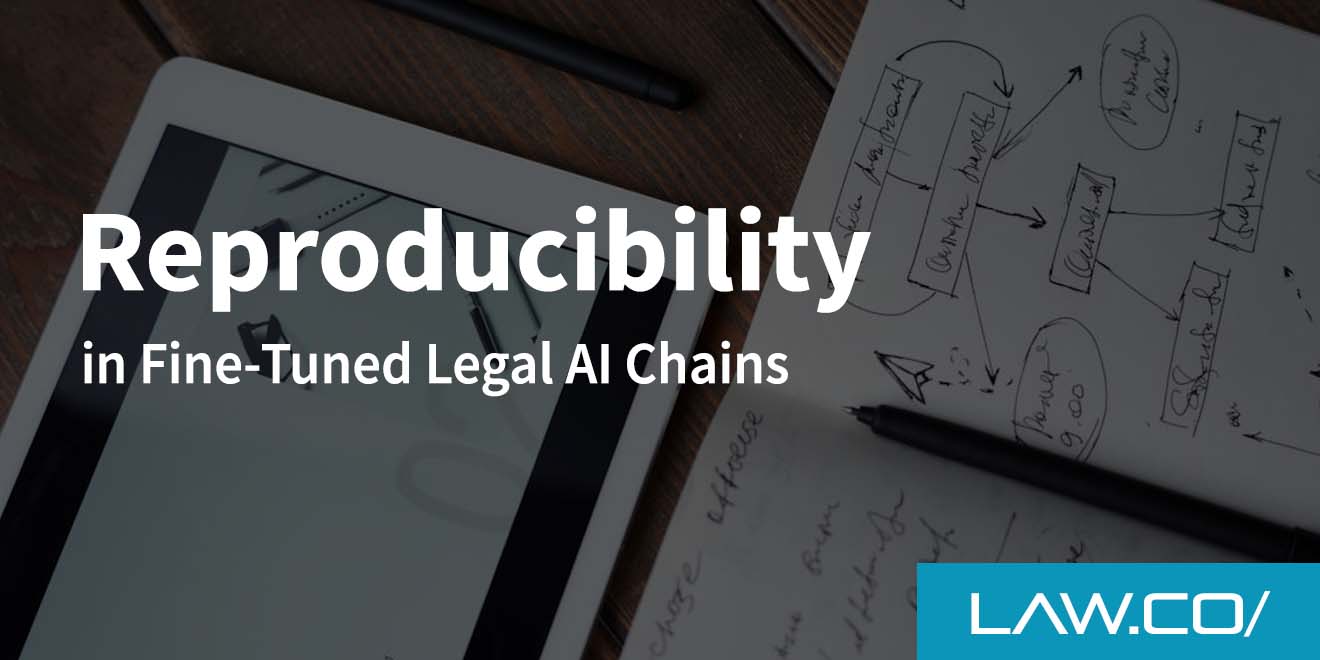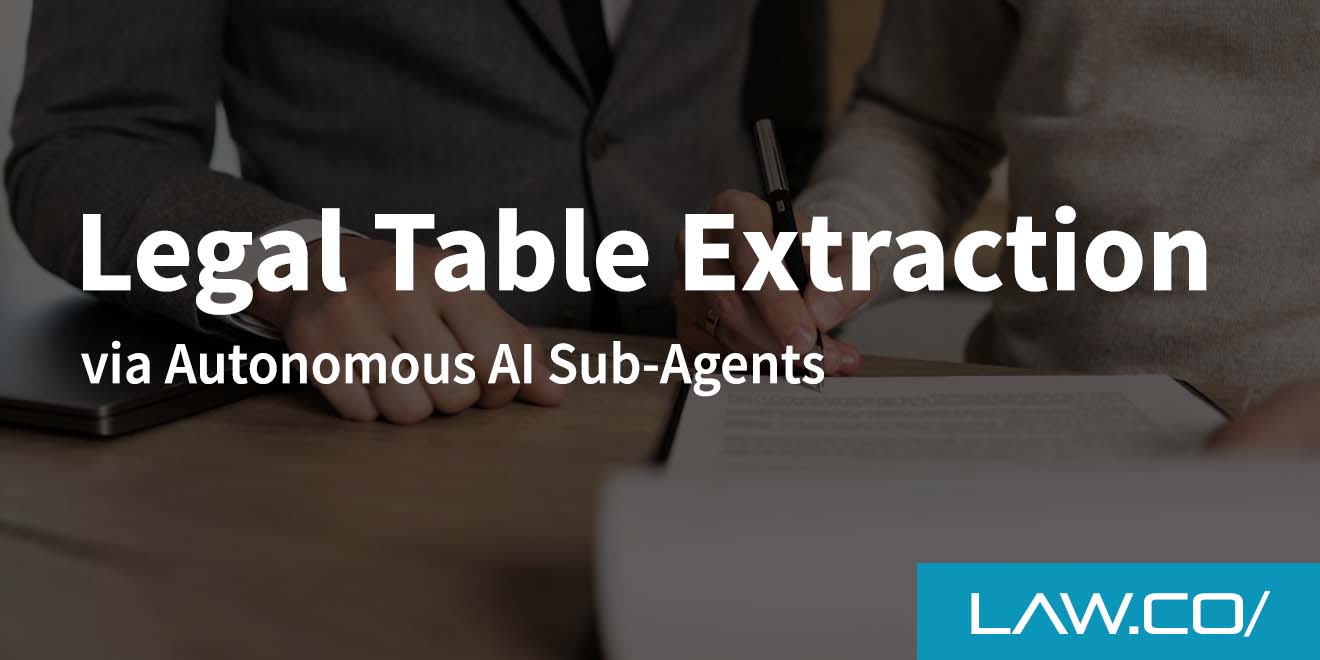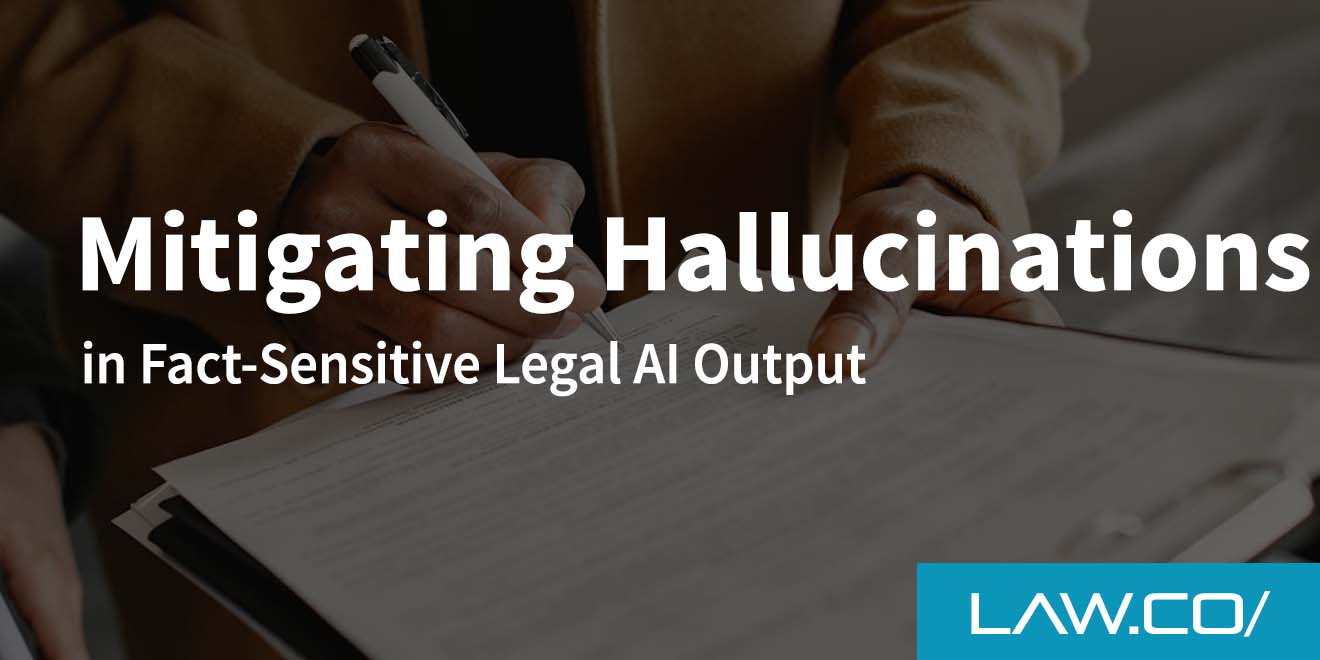

Reproducibility in Fine-Tuned Legal AI Chains
Reproducibility is the unglamorous hero of legal AI, the thing that keeps your results steady when everything else tries to wobble. If you are shipping fine-tuned models across intake, drafting, review, and compliance steps, consistency is not optional, it is survival. Your partners want predictability, your clients want accountability, and your regulators want paperwork that shows both.
Put simply, if you cannot rerun the same chain and get the same trace with the same output under the same inputs, you do not have a product, you have a science experiment. For readers in lawyers and law firms, this guide explains how to lock reproducibility into fine-tuned legal AI chains without strangling innovation or joy.
What Reproducibility Means in Legal AI
In plain terms, reproducibility means that given the same data, code, prompts, and configuration, your AI chain yields the same result. It covers not only the final text but the intermediate artifacts that get you there. Think of it as a chain of custody for computation. You want to be able to point to each step and say, here is what happened, here is why it happened, and here is how I can make it happen again.
The Baseline
There are two layers. The first is deterministic behavior for a single run on a single machine. The second is portable determinism across environments and time. The first protects you from flukes. The second protects you from drift when a library, tokenizer, or model checkpoint changes without telling you.
Why Fine-Tuning Complicates It
Fine-tuning changes the weights, which changes the probability distribution of outputs. That is the point, but it also amplifies small differences in tokenization, sampling temperature, or context window handling. A tiny mismatch in a preprocessing script becomes a visible difference in a contract clause. Treat fine-tuning like a medical device change. Document, validate, and version everything.
The Anatomy of a Legal AI Chain
A legal AI chain is a sequence of steps that move from intake to answer. Typical parts include data ingestion, normalization, retrieval, structured prompt assembly, generation, post-processing, and evaluation. Each step can be deterministic, or at least bounded. Your goal is to bound the randomness where determinism is not feasible.
Inputs are not just the user text. They include document embeddings, retrieval candidates, system prompts, and policy filters. If any of those are computed on the fly, they must be versioned and checksummed. Treat prompts like code. Tag them. Review them. Store them in the same repository as the pipeline.
Sources of Variance You Can Control
Variance hides in plain sight. Random seeds matter, but so do byte order, floating point versions, and tokenizer revisions. You can eliminate most of the noise by pinning versions and logging them.
Model and Tokenizer Versions
Always reference models and tokenizers by immutable identifiers. Avoid latest tags. Record the hash of the exact artifact. If your provider updates a base model, that should not change your production runs without an explicit promotion process.
Hyperparameters and Sampling
Temperature, top-p, top-k, and presence penalties shape output. For production runs that require stable language, set temperature to zero or a low value, then capture the full parameter set in your run metadata. If you must allow creativity, capture the seed and any nucleus sampling settings so you can rerun with the same stochastic path.
Prompt Assembly
Structured prompts help. Define slots for role, facts, citations, and policy. Render them from templates that are versioned. Store the rendered prompt alongside the output so auditors can see exactly what the model consumed.
Retrieval and Index Drift
When you rely on vector search, you inherit drift from evolving corpora and changing embeddings. Pin the embedding model. Snapshot the corpus for important runs. If snapshots are too heavy, record document IDs, chunk hashes, and ranking scores used at inference time so you can rebuild the same context later.
Documentation That Actually Works
Documentation should be useful on a Tuesday afternoon when something is on fire. Keep it actionable and minimal. The goal is a run card that lets a colleague reproduce last Friday’s output without calling you.
The Run Card
A good run card includes the model and tokenizer versions, the seed, all sampling parameters, the prompt template ID, the rendered prompt, retrieval artifacts, code commit hashes, environment hashes, and any feature flags. It reads like a recipe that can be cooked again next week.
Data Lineage
Track where your fine-tuning data came from, how it was filtered, and which transformations were applied. Keep hashes of datasets and splits. If you regenerate a dataset, assign a new version even if the underlying sources look the same. Invisible edits are the enemy of trust.
Evaluation That Respects the Law
Evaluation for legal outputs is not a generic classification task. You care about semantic fidelity, citation accuracy, and policy conformance. Reproducible evaluation means stable test sets and deterministic scoring.
Static Test Suites
Create curated test suites that cover statutes, clauses, and policy interpretations that matter to your practice areas. Freeze them. When you change the test suite, change its version and keep both old and new for comparison.
Scoring Without Surprises
Automated scoring can help, but the rules must be fixed. If you rely on an LLM judge, pin that judge model and prompt. Better, augment with string matching for citations and schema validators for outputs that must follow a format. Human review remains essential, but even human review should follow a rubric with versioned criteria.
Governance, Risk, and Control
Reproducibility is a control, not an ornament. Your policy should say that no chain enters production without a documented path to reproduce outputs and a defined rollback.
Change Management
Every change to models, prompts, datasets, or dependencies should pass through a change request with a diff, an evaluation report, and an approval. Use release tags that mean something. When a release is signed off, freeze it for reference and training.
Access and Segregation
Limit who can alter fine-tuning data or prompts. Separate dev, staging, and prod environments with different credentials. If a model in dev writes to a prod index, you have already lost reproducibility.
A Practical Workflow That Scales
Theory is nice, but teams need a workflow that does not collapse under deadlines. Keep it boring and repeatable.
Version Everything
Put datasets, prompts, code, and configs in version control. Use content hashes for large artifacts and store them in object storage. Do not rely on file names to infer lineage. Make the pipeline read versions by ID, never by path alone.
Immutable Environments
Use containers with locked base images. Do not install packages at runtime. Set environment variables explicitly. Capture the full image digest in your run logs. If your cloud provider changes GPU drivers, you will be happy you did this.
Seeds and Checksums
Set a seed once per run and propagate it through the chain. When that is not possible, record per step seeds. Emit checksums for inputs, outputs, and intermediate files. If anything mismatches, you will know where the divergence began.
Guardrails for Sensitive Outputs
Legal outputs carry risk. Reproducibility forms the bedrock for guardrails that matter, like policy enforcement and citation checks.
Policy as Code
Encode firm policies in rule engines or validators. Require that outputs pass the validators before leaving the chain. Version the rules and log the version with each output. If a policy changes, the validator version changes, which preserves auditability.
Traceable Citations
If the chain produces citations, make it assemble them from retrieved sources, not from memory. Store the retrieval IDs and the quoted spans. When a reader clicks a citation, the underlying document should be exactly the one used at inference time, not a later update.
Avoiding Common Pitfalls
Most breakages come from well-meaning shortcuts. Be predictable and you will be fast.
The Hidden Dependency
A notebook that depends on a developer’s local tokenizer cache will pass tests until the cache is cleared. Build your pipelines to fetch declared artifacts by version ID. If it is not declared, it is not allowed.
The Sneaky Prompt Edit
A tiny prompt tweak in production can sink a benchmark. Lock prompts behind a release process. If urgent fixes are needed, create a hotfix version and document it like any other release.
The Human Side of Consistency
Reproducibility is as much culture as code. Teams adopt the habits that their leaders tolerate, so reward consistency and make it visible.
Checklists and Rituals
Create a pre-release checklist that includes dataset hash verification, prompt diff review, and environment rebuild. Run it every time. Celebrate the green checks. It feels small, and it saves you from large headaches.
Clear Ownership
Assign owners for datasets, prompts, models, and pipelines. Ownership clarifies who writes the run cards, who approves changes, and who gets paged when something drifts. Accountability is the friend of reproducibility.
Measuring Success Without Cheating
You can game any metric, which means you need several that point in the same direction. Track how often you can rerun a production output and match it, how long reruns take, how many runs fail due to version drift, and how often a change request passes evaluation on the first try. If those numbers improve, you are on the right track.
Build a dashboard that shows the latest release, the model and tokenizer versions, the dataset hash, the prompt template ID, and the evaluation scores. When someone asks why a recommendation changed, your answer should begin with a link to that dashboard and end with a reproducible trace.
The Road Ahead
Determinism will never be perfect in language models, which is fine. The aim is controlled variability that you can explain and reproduce on demand. Better tooling is arriving for artifact registries, structured prompting, and evaluation stores. Until then, boring engineering wins. If you can write a run card that a tired colleague can follow, you are doing it correctly.
If you can rerun a six-month-old release on a fresh machine and get the same answer, you are doing it beautifully. Surprises belong in courtroom dramas, not in your build logs.
Conclusion
Reproducibility in fine-tuned legal AI chains is a posture, a set of habits, and a contract with your future self. Lock down models and tokenizers by version. Treat prompts like code. Freeze datasets and record their lineage. Pin environments, propagate seeds, and emit checksums. Evaluate with stable tests and versioned judges.
Govern changes with clear approvals, and keep dashboards that tell anyone on the team exactly what ran and why. None of this is glamorous, yet it is the groundwork that makes scale and trust possible. Do it well, and your AI stops being a novelty and starts being a reliable colleague who shows their work every single time.

%201.svg)










